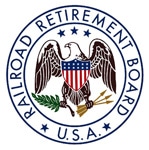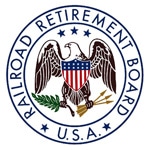
- Reducing unnecessary burden
- Increasing process efficiencies
- Improving the patient’s experience with their provider
CMS is beginning this process with evaluation and management services (office or outpatient visits). The goal is to increase the time providers spend with their patients and decrease the time spent documenting services. At the same time, CMS consistently seeks to reduce provider errors and unnecessary appeals.
CMS Administrator Seema Verma explained: “…we are moving the agency to focus on patients first. To do this, one of our top priorities is to ease the regulatory burden that is destroying the doctor-patient relationship. We want doctors to be able to deliver the best quality care to their patients.”
To see more information about the Patients Over Paperwork initiative, please visit the CMS website at https://www.cms.gov/About-CMS/story-page/patients-over-paperwork.html.
If you have questions about your Railroad Medicare coverage, you may call Palmetto GBA’s Beneficiary Contact Center at 800-833-4455, or for the hearing-impaired, call TTY/TDD at 877-566-3572. Customer service representatives are available Monday through Friday, from 8:30 a.m. until 7 p.m. ET. Visit Palmetto’s Facebook page at https://www.facebook.com/myrrmedicare/.
Visit Palmetto GBA’s free online beneficiary portal at www.PalmettoGBA.com/MyRRMed. This tool offers you the ability to access Railroad Medicare Part B claims data, historical Part B Medicare Summary Notices (MSN), and a listing of individuals you have authorized to have access to your personal health information.

 Palmetto GBA has introduced a new beneficiary portal,
Palmetto GBA has introduced a new beneficiary portal,  The Centers for Medicare & Medicaid Services has announced that the standard monthly Part B premium will be $121.80 in 2016. However, most Medicare beneficiaries will not see an increase in their monthly Part B premiums because of a “hold harmless” provision in the law. Under that provision, Part B premiums cannot increase for current enrollees if there is no cost-of-living increase in social security benefits.
The Centers for Medicare & Medicaid Services has announced that the standard monthly Part B premium will be $121.80 in 2016. However, most Medicare beneficiaries will not see an increase in their monthly Part B premiums because of a “hold harmless” provision in the law. Under that provision, Part B premiums cannot increase for current enrollees if there is no cost-of-living increase in social security benefits.